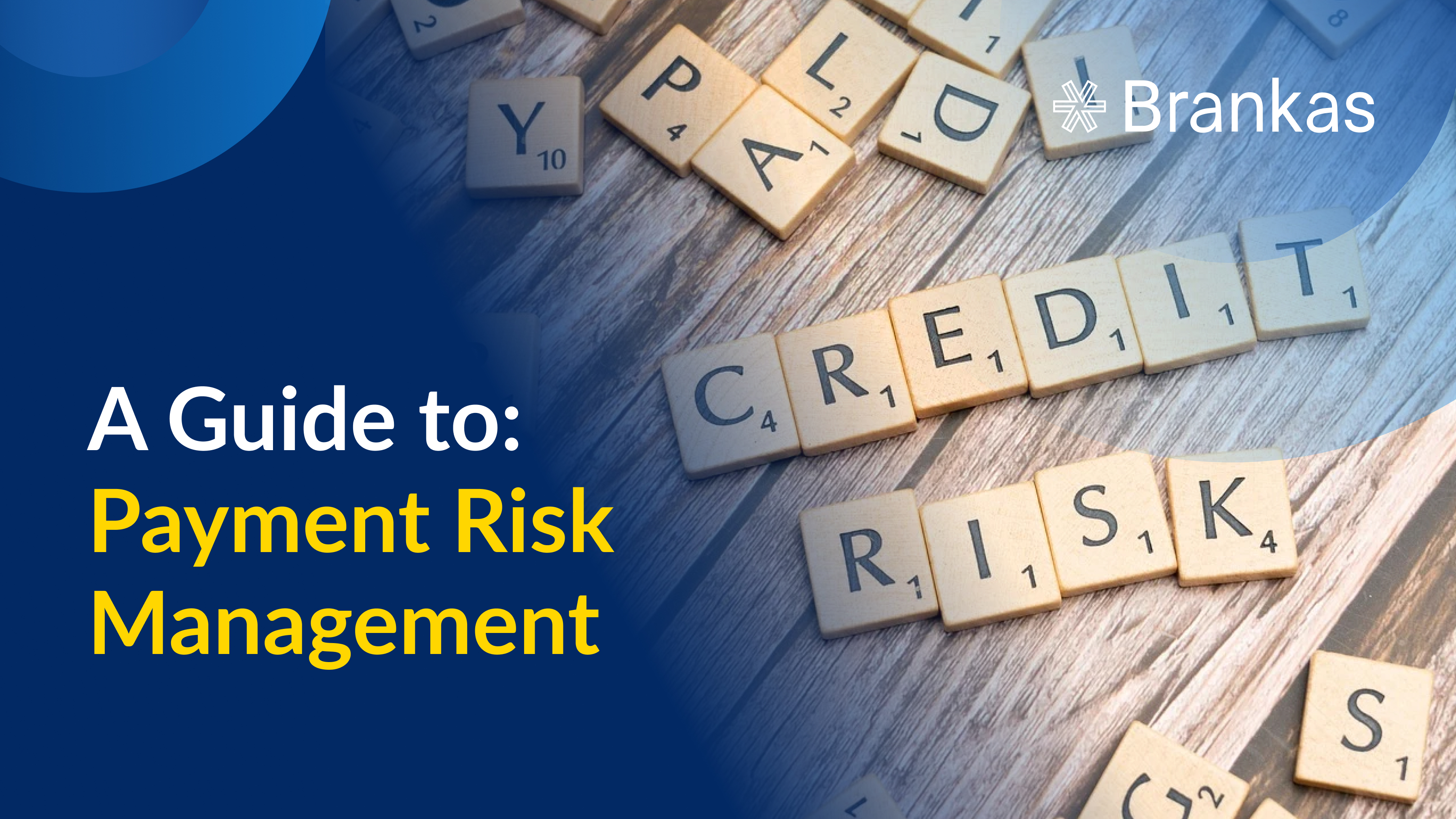As with most modern technologies, one of the biggest challenges in digital transactions is security. Consumers and businesses have a wide range of payment options, such as digital wallets and bank transfers, but the availability of new payment methods comes with its own risks.
Fraudsters have found new ways to work around security features and exploit vulnerabilities in e-commerce payment systems. When consumers have a negative experience with your payment process or feel that your site is compromised, chances are, they won’t proceed with the transaction. This leads to distrust and profit losses, both of which are bad for your business.
Let’s explore the growing risk of payment fraud and the effective payment risk management practices you can use to protect your business and customers.
What is Payment Risk
Payment risk refers to the potential losses or damages entities face for several reasons, including fraudulent activities, technical errors, security breaches, or regulatory non-compliance. Companies handling a high volume of digital transactions and payments, such as banks and online merchants, are vulnerable to payment risks.
The increasing complexity of payment systems and the influx of digital transactions have amplified these risks, making it crucial for businesses to implement a strong payment risk management framework.
Types of Payment Risk in e-Commerce
Given the volume and velocity of transactions in the world of e-commerce, here are common types of payment risks that merchants and financial institutions should watch out for:
1. Fraud Risk
The risk of payment fraud is one of the most significant challenges faced by businesses and customers today. Now that real-time transfers from digital wallets, pay-by-bank, and other modes of payment are being accepted globally, fraudsters are devising more sophisticated ways to intercept these transactions. Fraud manifests in various forms, including:
• Identity Theft: Fraudulent actors steal personal information to make fake profiles or accounts and unauthorized purchases. Identity theft is particularly damaging because it can take victims a long time to recover their identities, reputations, and finances.
• Credit Card Fraud: Credit card fraud is the unauthorized use of a credit card to make purchases or obtain cash. This can happen in various ways, including the use of stolen card information via phishing, data breaches, or skimming devices.
• Account Takeover: Account takeover fraud occurs when a criminal gains unauthorized access to a user’s account—likely using stolen credentials—and makes changes or conducts transactions without the user’s knowledge.
2. Chargeback Risk
Chargeback fraud, often referred to as friendly fraud, refers to incidents when a consumer makes a legitimate purchase but then disputes the charge with their bank afterwards. They may claim they never received the item or that it was not as described. What makes chargebacks problematic is they differ from straight refunds and can lead to financial losses without any wrongdoing on the part of the merchant. If the bank feels the cardholder’s request is valid, the merchant will be forced to pay the funds back to the client. Not only will this incur high costs but also damage the reputation of the business.
3. Compliance Risk
Financial institutions and merchants must comply with various regulations governing payment processing, such as the Payment Card Industry Data Security Standard (PCI DSS) and the Anti-Money Laundering (AML) Act. Failure to adhere to these regulations can result in fines and legal repercussions.
4. Operational Risk
Operational risk includes technical glitches, system outages, human errors, and other failures that can disrupt payment processing. To manage operational risk, ensure that your workflows are streamlined and that staff has adequate training to deal with these issues.
5. Fintech Fraud Risk
The rapid adoption of APIs has paved the way for innovation and efficiency but also increased vulnerabilities. Fintech fraud targets weak points in fintech platforms, especially in sectors like peer-to-peer payments and open banking. That’s why it’s important to use a tried and tested platform equipped with state-of-the-art security features, such as Brankas.
6. Market Risk
Market risk is a type of risk that merchants and financial institutions have little to no control over. However, they should remain vigilant as changes in market conditions or consumer behavior can also impact payment processing. For example, cryptocurrencies are slowly becoming more acceptable forms of payment, which may require businesses to adapt quickly to stay competitive.

Why Managing Risk is Important
With all these payment risks, it’s better to be safe than sorry. The world of e-commerce involves a high volume of sensitive customer information and financial data, which can be compromised when you least expect it. It’s vital to be on guard and take a proactive approach to payment processing risk management to deter illicit activities from bad actors.
Unfortunately, some businesses often wait until a red flag appears to assess and manage risk. The consequences of poorly managed payment risk can be severe, so it’s important to address risk at every step of the customer journey—from sign-up to purchase. Here are reasons why an effective payments risk management framework is essential:
• Protecting Financial Interests: By identifying and mitigating risks early, businesses can avoid significant financial losses associated with fraud or chargebacks.
• Maintaining Customer Trust: Customers trust businesses that care about security and handle data with confidentiality. For instance, peer-to-peer payments have a certain degree of urgency. Customers prefer payment platforms that make these transactions easy while keeping their money and data secure.
• Adhering to Regulations: Adhering to industry regulations not only protects businesses from legal penalties but also enhances their reputation as trustworthy entities in the marketplace.
• Operational Efficiency: Streamlined risk management processes contribute to smoother operations, reducing delays and improving overall customer experience.
Payment Risk Management Controls
Effective payment risk management is not a one-size-fits-all solution, but there are strategies to protect your business from financial crime and ensure customer trust. Here are some best practices to consider:
1. Strong Authentication Measures
Utilize multi-factor authentication (MFA) to verify user identities during transactions. Using biometrics or one-time passwords (OTPs) can help reduce unauthorized access. Financial institutions should also perform Know Your Customer (KYC) checks to validate the authenticity of customers’ identities before providing them financial services.
2. Regular Monitoring and Analysis
Continuously monitor transactions for unusual patterns that may indicate fraud. Advanced analytics tools can help automatically identify anomalies in real time. APIs in financial services allow businesses to streamline their payment processes and detect suspicious activities instantly so they can respond immediately.
3. Compliance Audits
Regularly conduct audits to ensure adherence to regulatory standards. These assessments help identify vulnerabilities and potential issues before they become too complicated to address.
4. Secure Payment Gateways
Choose payment gateways that have strong security features such as encryption and tokenization. These technologies protect sensitive data during transactions, especially high-volume ones like disbursement payments.
5. Customer and Staff Education
Provide training on recognizing fraudulent activities and phishing attempts. An informed customer base is less likely to fall victim to scams, while knowledgeable staff can respond effectively to security threats.
6. Chargeback Management
Chargebacks are one of the most frustrating payment risks. Fraud alerts help facilitate refunds and stop them from becoming chargebacks. By analyzing various data points, such as transaction history, user behavior, and device fingerprinting, these systems can identify potentially fraudulent activities before they lead to chargebacks.
7. Fraud Detection Tools
Use technologies like machine learning and AI to identify and combat the risk of payment fraud. These tools analyze transaction patterns in real time and flag anomalies instantly. For instance, if a transaction is initiated from an unusual location or if a user rapidly switches between multiple credit cards, the system can flag these transactions for further review or automatically block them.
Reduce Payment Risks with Brankas
As e-commerce continues to expand globally, understanding and managing payment risks has never been more critical for both merchants and financial institutions. By implementing these controls, organizations can protect against financial losses and reputational damage and ensure regulatory compliance.
At Brankas, we understand that payment risk management is no easy task. Leveraging advanced technologies and tools can help you stay ahead of emerging threats. We empower businesses with our open finance suite to enhance transparency, efficiency, and security in payment processes. Our solutions are built with industry-leading security protocols to reduce various types of payment risks. They’re also designed according to international standards to reduce the burden of compliance.
Whether you’re a financial institution looking to mitigate payment risk or a merchant seeking scalable payment systems, Brankas offers the tech stack and expertise to help you succeed. Contact us today!
